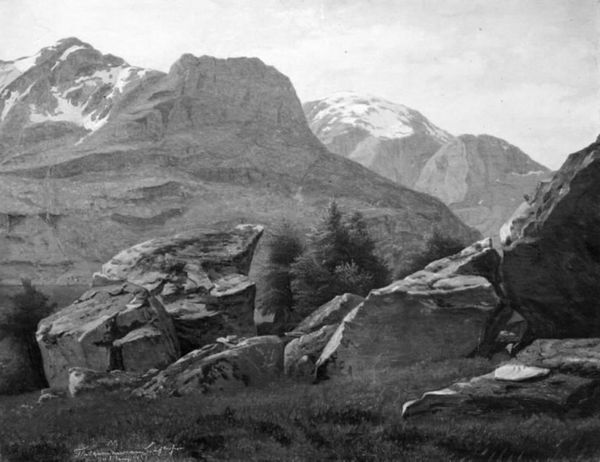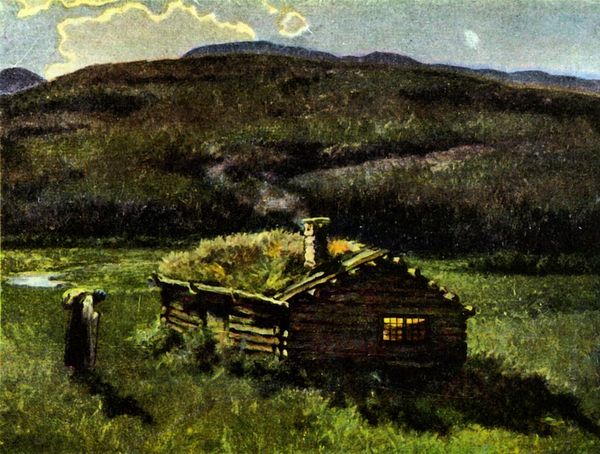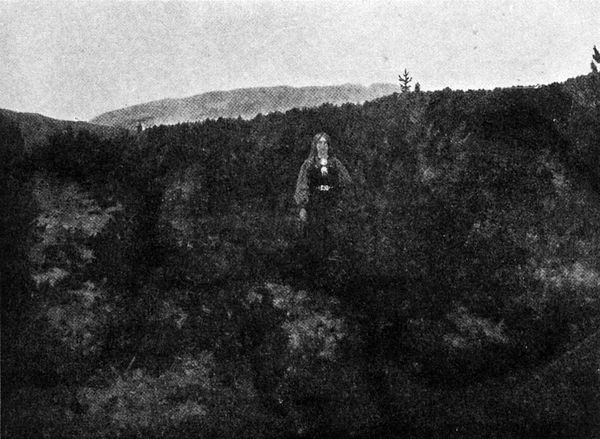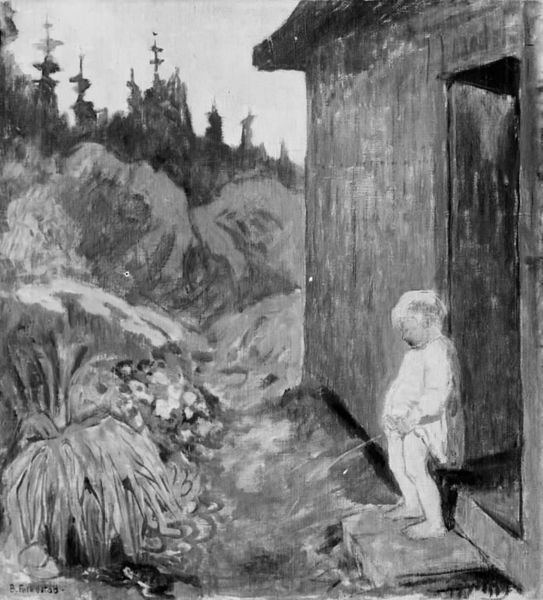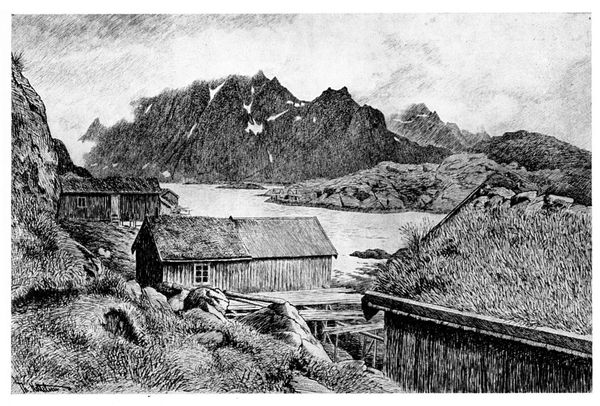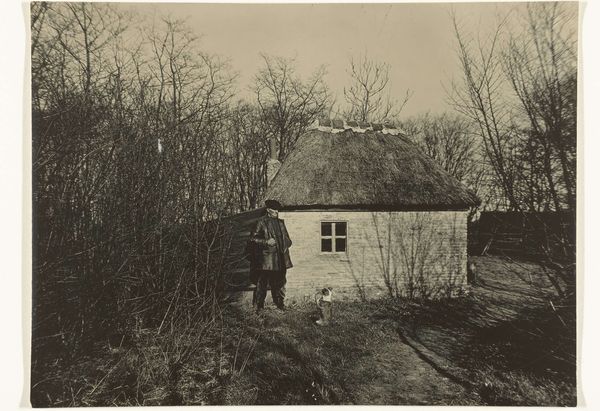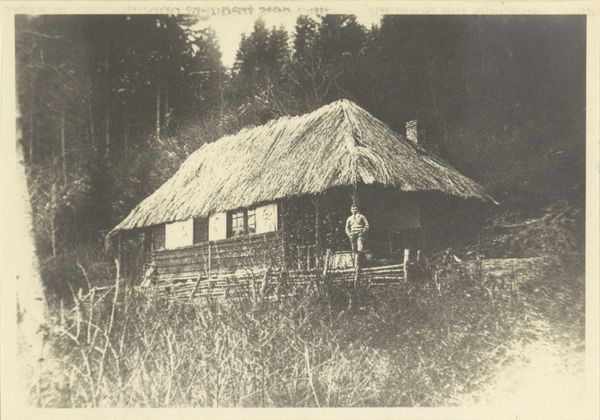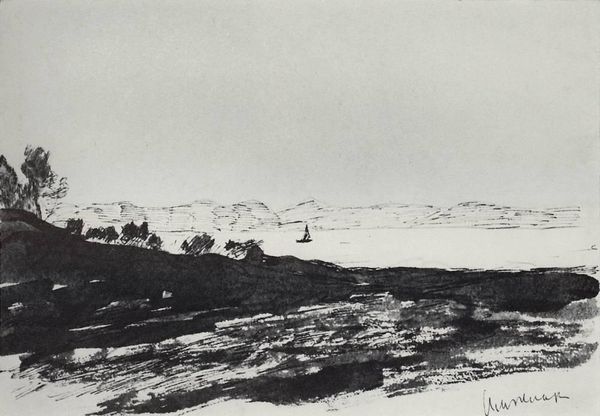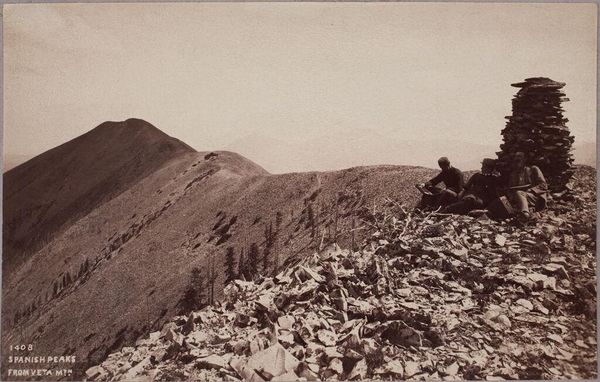
painting
#
portrait
#
narrative-art
#
black and white photography
#
painting
#
countryside
#
landscape
#
rural
#
black and white format
#
monochrome colours
#
b w
#
black and white theme
#
romanticism
#
black and white
#
monochrome photography
#
monochrome
#
monochrome
Copyright: Public domain
Curator: Here we see "Farvel Da Mor", which translates to "Goodbye, Mother", by Theodor Severin Kittelsen. It's rendered in monochrome, offering a poignant scene. Editor: Stark. My immediate reaction is melancholy; the muted tones give a weightiness to what seems a solitary journey. Look at how the dark, dense figure of the child almost merges with the shadowed foreground. Curator: Indeed. The somber quality is partly intended. Black and white often strips away distractions, guiding us toward raw emotion. What is most interesting to me are the symbols; a solitary figure evokes a journey—possibly a rite of passage or an unwelcome departure. It has archetypal resonances of leaving the maternal for an uncertain future. Editor: It is worth exploring the medium and material context, however. Without knowing the exact materials, my instinct tells me this may be made from industrial graphite materials rather than purely natural chalk. That choice, whether intentional or economical, adds an industrial-era flavor and may play with the theme. The rural idyll collides with the stark realities of available manufactured media. Curator: A valid point. If a commercially-produced medium was indeed chosen, the landscape loses its pre-industrial innocence, its accessibility even, in light of wider socioeconomic forces. Editor: Furthermore, considering how the print may have been consumed adds more nuance. It isn't purely personal; instead, maybe this was produced as a memento mori for mass distribution to signal specific, sentimental attitudes, given the growth of printmaking culture in this time. Curator: Thematically speaking, Kittelsen had an inclination for exploring Norwegian folklore, which is often inseparable from the landscape. Here, the backdrop is more than just scenery. It becomes a character, almost a spiritual presence guiding the child. Editor: It pushes us to see how materials participate and shape the perceived cultural landscape, reflecting production, class and commercial opportunities. We’re reminded how intimately our emotional states intertwine with economic ones, whether or not we choose it that way. Curator: Precisely. It deepens our reading when materiality joins the discussion. The symbol and matter converse and complicate our interpretation of Norwegian identity, home, and the modern world. Editor: A reminder to interrogate and contextualize the apparent quietness. It is never still if the factory lurks behind that landscape.
Comments
No comments
Be the first to comment and join the conversation on the ultimate creative platform.
